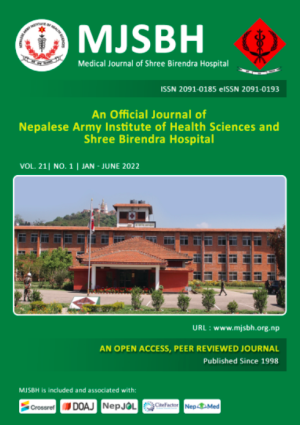Bullying Victimization and its Associated Factors among Adolescent Students
Keywords:
Associated factors of harassment, Bullying in adolescents, Influencing factors of harassment, Victimization of harassmentAbstract
Introduction: Bullying is common type of school violence and is a major source of maladjustment with undue effect on health and academic performance among adolescents. This study aimed to identify the prevalence of bullying victimization among adolescent students and its association with socio-demographic, family and school characteristics.
Methods: It was descriptive survey carried out among 568 adolescents studying in Grade 7 to 11 of 10 public and 10 private schools of Kathmandu municipality selected through multi-stage stratified cluster sampling technique. Nepali version of modified revised Olweus Bully Victim Questionnaire (OBVQ) was used for data collection through Google Survey Tool after taking informed consent.
Results: Prevalence of bullying victimization was 20.4% among 568 respondents. In regards types of bullying, prevalence of verbal bullying was 75.8%, relational bullying was 57.7%, physical bullying was 23.2% and cyber bullying was 23.2%. Male respondents were more victimized (63.8%) than female (36.2%).The highest proportion (23.6%) of bullied respondents was from 15-19 years aged group. About one-third (34.0%) of bullied students had family problem. Higher proportion of respondents who disliked school and who were afraid of being bullying, were bully victimized (40.9% and 33.3% respectively).
Conclusion: Prevalence of bullying victimization tends to be an issue among adolescent students. Bullying victimization is likely to be high in 15-19 years aged group and in male adolescents. Prevalence of verbal bullying tends to be commonest types of bullying.
Downloads
Downloads
Published
How to Cite
Issue
Section
License
Copyright (c) 2022 Medical Journal of Shree Birendra Hospital

This work is licensed under a Creative Commons Attribution-NonCommercial-NoDerivatives 4.0 International License.
This license enables reusers to distribute, remix, adapt, and build upon the material in any medium or format for noncommercial purposes only, and only so long as attribution is given to the creator.




